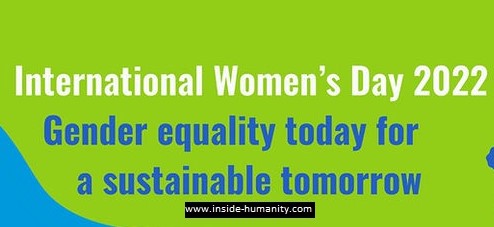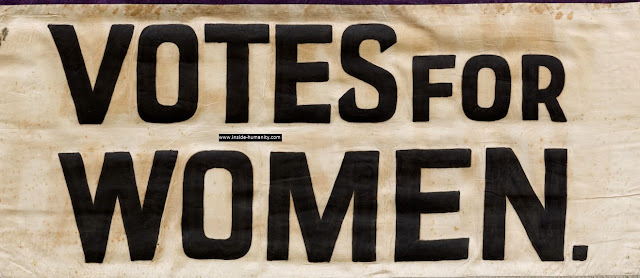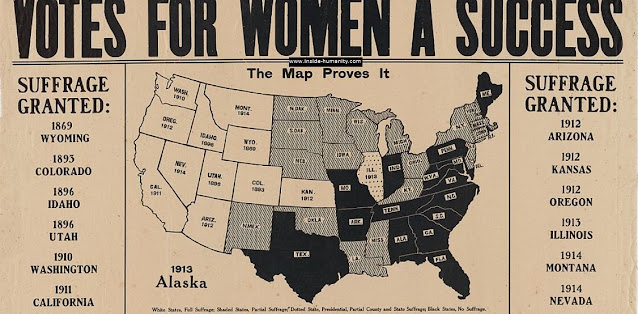Introduction
Women's suffrage, or the right for women to vote, has been a contentious issue throughout history. The struggle for women's suffrage was a long and hard-fought battle, spanning over a century. The movement for women's suffrage was not a monolithic one, but rather a diverse and multifaceted effort with many different leaders and strategies. This paper will explore the history of the women's suffrage movement and its significance in shaping the world we live in today.
Early Efforts for Women's Rights
The women's suffrage movement has its roots in the early efforts for women's rights in the 19th century. Early activists such as Susan B. Anthony and Elizabeth Cady Stanton were some of the first to organize and advocate for women's suffrage.
They formed the National Woman Suffrage Association (NWSA) in 1869, which focused on getting women the right to vote through lobbying and protesting. Other early activists, such as Lucy Stone, formed the American Woman Suffrage Association (AWSA), which focused on gaining suffrage through state-by-state campaigns.
Key events and milestones in the early history of women's suffrage include the Seneca Falls Convention of 1848, which was organized by Stanton and Anthony and is considered to be the first women's rights convention in the United States.
Another important event was the passage of the 15th Amendment in 1870, which granted African American men the right to vote but did not include women. This led to a split in the suffrage movement, with some activists focusing on universal suffrage for all citizens, regardless of race or gender, while others focused specifically on women's suffrage.
The Fight for the Vote
The suffrage movement picked up steam in the early 20th century, with the formation of the National Women's Party (NWP) in 1916. The NW group was led by Alice Paul and focused on more militant tactics such as picketing and hunger strikes. These actions, known as suffragettes, were met with fierce resistance from the government, and many suffragettes were arrested and imprisoned.
The impact of World War I on the suffrage movement was significant. The war effort required the full participation of all citizens, and women played a vital role in supporting the war effort. This led to a shift in public opinion and increased support for women's suffrage. In 1920, the 19th Amendment was passed, granting women the right to vote.
Opponents of Women's Suffrage
Opponents of women's suffrage argued that women were not capable of understanding politics and making informed decisions. They also believed that giving women the right to vote would undermine traditional gender roles and threaten the social order. Conservative and traditionalist groups such as the Anti-Suffrage League actively campaigned against suffrage, and many suffragettes faced harassment, violence, and imprisonment.
Despite the resistance they faced, suffragettes persisted in their efforts to secure the right to vote. The movement was not only met with opposition from conservative groups, but also from some progressive groups who believed that universal suffrage should be focused on enfranchising marginalized groups like African Americans and workers, rather than women.
International Women's Suffrage Movement
The fight for women's suffrage was not limited to the United States. Women in other countries also organized and campaigned for the right to vote. International organizations such as the International Woman Suffrage Alliance (IWSA) were formed to coordinate efforts and share strategies between countries. The suffrage movement spread across Europe, with countries such as Britain, Germany, and Sweden granting women the right to vote before the United States.
However, the progress and challenges faced by suffragettes varied widely between countries. In some places, such as New Zealand, women were able to vote as early as 1893, while in others, such as France, women did not gain the right to vote until 1944.
Ladies of Variety and the Testimonial Development
Women of color faced additional challenges in the suffrage movement, as they were not only fighting for the right to vote but also for their rights as citizens and as people of color. African American suffragettes such as Ida B. Wells and Mary Church Terrell played important roles in the movement, but often faced discrimination within the suffrage organizations and were not always included in the mainstream narrative of the suffrage movement.
The intersectionality of race and gender also played a role in the experiences of suffragettes from other ethnic backgrounds, such as Asian American and Latina suffragettes. Despite these challenges, women of color continued to organize and fight for suffrage and their rights, laying the foundation for future civil rights movements.
Media Representation and Propaganda
Media played a crucial role in shaping public opinion on the issue of suffrage. Suffragettes used images, slogans, and other forms of messaging to promote their cause and counter the opposition's arguments. They also used the media to call attention to the arrests, abuse, and imprisonment of suffragettes, which helped to garner public sympathy for their cause.
Opponents of suffrage also used the media to spread their message and influence public opinion. They often portrayed suffragettes as man-hating, radical feminists who were a threat to the traditional social order. These negative portrayals of suffragettes in the media were often used to justify the mistreatment of suffragettes and discourage support for their cause.
The impact of media representation on the suffrage movement was significant. It helped to shape public opinion and influence the outcome of the suffrage struggle. The media also played a role in shaping the legacy of the suffrage movement by shaping the way that the movement and its leaders are remembered and celebrated today.
The Job of Religion in the Testimonial Development
Religion played a significant role in the suffrage movement, both as a source of support and as a source of opposition. Religious leaders and institutions were divided on the issue of suffrage, with some supporting the movement and others opposing it.
Many suffragettes were inspired by their faith to fight for the rights of women and saw suffrage as a moral and social justice issue. They often drew parallels between their cause and religious teachings on equality and justice. On the other hand, some religious leaders and institutions opposed suffrage, arguing that it went against traditional gender roles and the natural order.
The intersections between suffrage and social justice movements in religious contexts were complex, as religion was often used to justify both support and opposition for suffrage. Despite this, many suffragettes found support and inspiration in their faith and continued to fight for suffrage and women's rights from a religious perspective.
The Future of Women's Suffrage and Gender Equality
The struggle for women's rights and gender equality is ongoing, and there is still much work to be done. Contemporary feminist movements continue to fight for reproductive rights, equal pay, and an end to discrimination and violence against women. Intersectionality and intersectional feminism have become important frameworks for understanding and addressing the ways in which different forms of oppression intersect and impact marginalized groups.
The future of women's suffrage and gender equality is uncertain, but there is potential for progress and change. The ongoing efforts of feminist activists and movements can lead to further advancements in the rights and equality of women. However, it will require continued efforts and sustained activism to ensure that the legacy of the suffrage movement continues to shape a more just and equal society for all women.
Economic Impact of Women's Suffrage
Women's suffrage had a significant economic impact, both for women and for society as a whole. The ability to vote allowed women to have a voice in decisions that affected their economic well-being and paved the way for increased economic opportunities and independence. Women's suffrage also led to increased labor force participation for women, which in turn led to economic growth and development.
The economic impact of women's suffrage extended to industries and businesses as well. The increasing number of women in the workforce led to changes in the labor market and new demands for goods and services. This had a positive impact on many industries and businesses that adapted to the new market conditions, leading to increased economic growth and development.
Political Impact of Women's Suffrage
Women's suffrage had a significant impact on the political landscape and representation. The increased number of women voters led to more women running for office and being elected. This in turn led to a greater representation of women's perspectives and interests in government and politics.
The impact of women's suffrage also extended to political parties and campaigns. Political parties had to adapt to the changing electorate and take into account the concerns and interests of women voters. This led to changes in political platforms and campaign strategies, as parties had to appeal to women voters in order to win elections.
The role of women's suffrage in shaping policy and legislation was also significant. Women's suffrage allowed women to have a voice in the political process, which in turn led to more policies and legislation that addressed women's concerns and interests, such as labor laws, social welfare programs, and reproductive rights.
Cultural Impact of Women's Suffrage
Women's suffrage had a significant cultural impact, shaping norms and perceptions of gender. The suffrage movement challenged traditional gender roles and societal expectations, paving the way for increased social and economic opportunities for women.
The impact of women's suffrage was also reflected in literature, art, and media. The suffrage movement was a source of inspiration for many artists, writers, and filmmakers. It also led to a greater representation of women's perspectives and experiences in these forms of cultural expression.
The ongoing cultural legacy of the suffrage movement continues to shape the way that we view and understand gender roles and expectations. The suffrage movement challenged traditional societal norms and paved the way for greater equality and opportunities for women. It continues to inspire feminist movements and activism today.
The Impact of Women's Suffrage on Families and Relationships
Women's suffrage had a significant impact on families and relationships. It led to changes in gender roles and expectations within the family. Women's increased political and economic power also led to changes in marriage, divorce and child-rearing. Women were able to have more control over their own lives and make their own decisions, leading to more equality and autonomy within relationships.
The suffrage movement also played a role in promoting gender equality within relationships. It encouraged men and women to re-examine traditional gender roles and work towards more equal partnerships. This had a positive impact on families and relationships, leading to stronger and more fulfilling connections between partners.
The Global Impact of Women's Suffrage
The impact of women's suffrage was not limited to the United States, it spread globally and had a significant impact on women's rights worldwide. The suffrage movement inspired women in other countries to organize and campaign for the right to vote. International solidarity and activism played a crucial role in the global fight for women's suffrage.
Comparisons of the progress and challenges faced by suffragettes in different countries showed that the progress and challenges varied widely between countries. Some countries such as New Zealand and Australia granted women the right to vote before the United States, while in others, such as Saudi Arabia, women are still fighting for suffrage.
The spread of the suffrage movement and its impact on women's rights globally highlighted the importance of international solidarity and activism in the fight for women's rights.
Conclusion
The struggle for women's suffrage was a long and hard-fought battle that had a significant impact on the world we live in today. The suffrage movement led to the granting of the right to vote to women and the ongoing fight for gender equality. It had a significant impact on politics, society, economy, culture, families, and relationships.
The suffrage movement was a catalyst for change that continues to inspire feminist movements and activism today. The fight for suffrage was not only a fight for the right to vote but also a fight for the rights and recognition of women as equal citizens. It is important to remember the legacy of the suffrage movement and to continue the work towards gender equality.















0 Comments
Thank you. We'll reply you shortly.